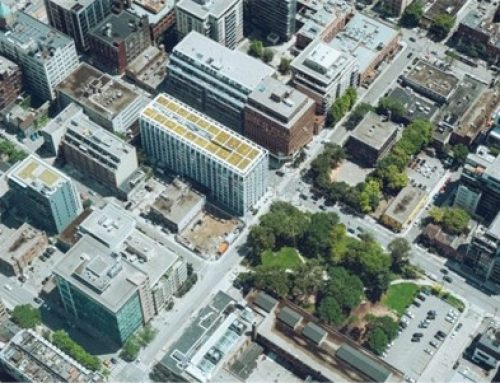by Joshua Yeager
What was once a lush forest is now a “moonscape.”
At least a tenth of the world’s mature giant sequoias were destroyed by a single wildfire that tore through the southern Sierra Nevada late last year, according to a draft report prepared by scientists with the National Park Service and shared with the Visalia Times-Delta.
The catastrophic discovery that forest managers called “mind-blowing” comes five months after firefighters contained the Castle Fire — which scorched 175,000 acres across the Sequoia National Park and forest.
Between 7,500 and 10,000 monarchs perished in the wildfire, which equates to 10% to 14% of the world’s mature giant sequoia population, the study found. Researchers used satellite imagery and modeling from previous fires that burned through old-growth sequoia groves to arrive at the figure.
“I cannot overemphasize how mind-blowing this is for all of us. These trees have lived for thousands of years. They’ve survived dozens of wildfires already,” said Christy Brigham, chief of Resources Management and Science at Sequoia and Kings Canyon national parks.
The consequences of losing large numbers of giant sequoias could be far-reaching, forest managers said. Redwood forests are among the world’s most efficient at removing and storing carbon dioxide in the atmosphere. The groves also provide critical habitat for native wildlife and help to protect the watershed that farmers and communities on the San Joaquin Valley floor rely on.
Brigham, who is the study’s lead author, cautioned that the numbers are preliminary and the research paper has yet to be peer-reviewed. Beginning next week, teams of scientists will hike to the groves that experienced the most fire damage for the first time since the ashes settled.
The snow, at some of the higher elevations, is just starting to melt.
“I have a vain hope that once we get out on the ground the situation won’t be as bad, but that’s hope — that’s not science,” she said.
Smoke in the Sequoia Crest area from the SQF Complex fire obscures the afternoon Sun on Thursday, September 24, 2020.
Brigham was “lulled into a sense of, ‘Oh, we have time to figure this out,’ she said. “These trees are incredible. We’re working on it, but it’s not super urgent … This is going to unfold over the next few decades.”
Seeing aerial photos of the Freeman Grove was a rude awakening for the scientist. Large swathes of one of the Sierra’s most impressive sequoia groves had been reduced to a moonscape, she said.
“Five years ago, we had never seen anything like this. The sequoias are so huge and fire-adapted, we thought they might fare better,” said Amarina Wuenschel, an ecologist with the U.S. Forest Service.
The extent of the damage to one of the world’s most treasured trees is noteworthy because the sequoia themselves are incredibly well adapted to fire. The iconic sentinels of the forest — some of which are more than 2,000 years old, 250-feet tall and 30 feet in diameter — require fire to burst their pine cones and reproduce.
For millennia, the towering trees have thrived in the Sierra Nevada, where fire was a natural part of the landscape.
Native American tribes inhabiting the Sierra understood the virtue of fire and often set the brush ablaze, clearing the forest floor for new growth to take hold.
When settlers arrived in central California in the 1850s, Indigenous burning practices came to a halt — to be eventually replaced with the likes of Smokey the Bear and anti-fire policies that quickly stomped out even the smallest of blazes.
“One-hundred years of fire suppression, combined with climate change-driven hotter droughts, have changed how fires burn in the southern Sierra and that change has been very bad for sequoia,” Brigham said.
Sequoia and Kings Canyon have conducted controlled burns since the 1960s, about a thousand acres a year on average. Brigham estimates that the park will need to burn around 30 times that number to get the forest back to a healthy state.
The Castle Fire erupted on Aug. 19 in the Golden Trout Wilderness amid a flurry of lightning strikes. The Shotgun Fire, a much smaller blaze burning nearby, was discovered shortly after and the two were renamed the Sequoia Complex.
Brigham and Wuenschel are now targeting high-priority groves that are most in danger should another wildfire happen, which is likely given an intensifying drought that has left the Sierra measuring one of its driest years in recorded history, they said.
Conditions in the park remain so dry that a sequoia tree was discovered still burning in a remote area of the forest earlier this month — essentially meaning the Castle Fire hasn’t stopped destroying.
Sierra officials are cautiously optimistic that last year’s unprecedented wildfires will shock policymakers into action, with more resources allocated to forest management and fire prevention projects.
“I don’t even want to call it a silver lining because the devastation of the last few years of wildfire is just unfathomable,” said Paul Ringgold with Save the Redwoods League, a conservation group dedicated to preserving and protecting the giant trees.
The nonprofit had recently purchased the Alder Grove in the Tulare County mountains before it was hit by the Castle Fire, killing more than a dozen of the massive monarchs.
“These are our heart spots,” he said of the sequoia groves. “Some of my formative experiences, my attachment to the importance of nature, was formed in these forests.”
He wants to ensure that future generations can have the same experience. Earlier this month, scientists with the League replanted some of the burned redwoods at Alder Grove.
This year’s extreme drought conditions could prevent the thirsty sequoia seedlings from surviving, scientists fear. Even if they do regrow, it’ll likely be centuries before the monarchs come to inspire the same sense of awe that draws tourists annually from around the globe.
“It’s quite a bit different to have sequoias in the form of seedlings rather than massive monarchs towering overhead,” Wuenschel said.

Tagline Box for Emphasis
Your Content Goes Here





